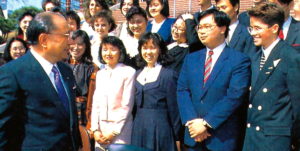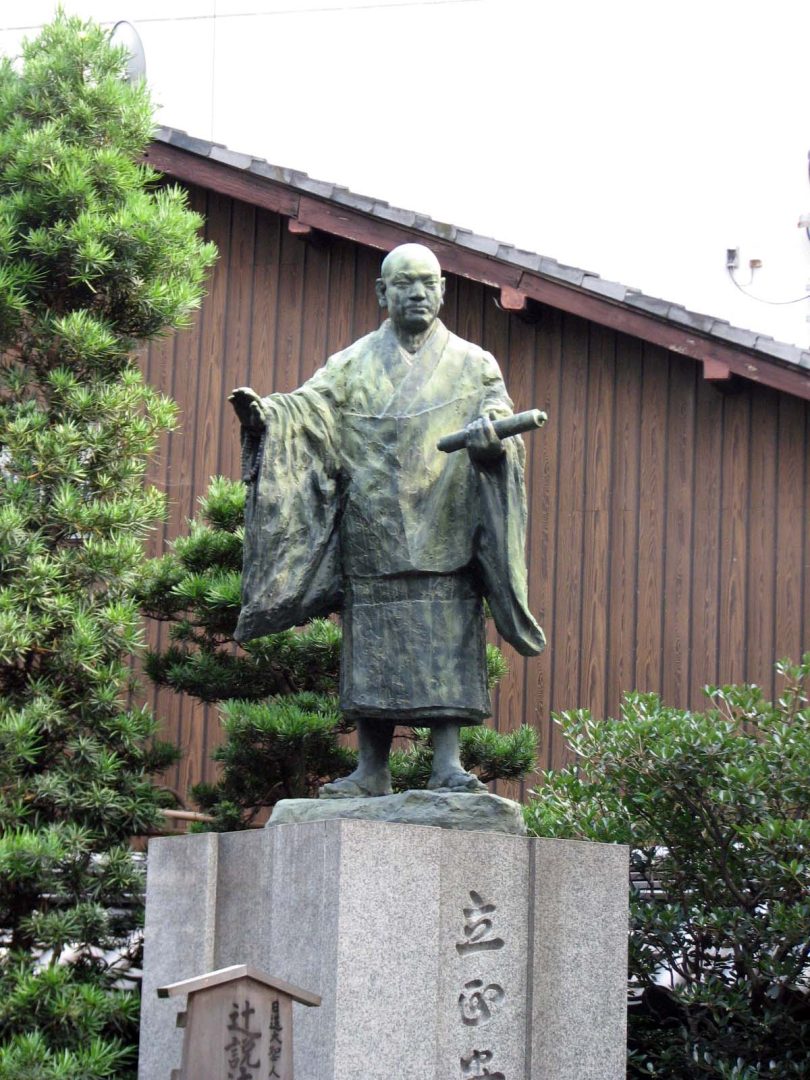The Foundation
Toda Josei and Makaguchi Tsunesaburo co-founded Soka Gakkai in the early 1920s. The teachings and values of a 13th-century Buddhist monk, Nichiren was its foundation. It began as a way to engender community harmony through the education of laypeople. Toda Josei quickly realized that a religious component was missing. A joining was made with Nichiren Shonsu in 1928.
The melding of education and religious faith was made known in a pamphlet released in 1937. It spoke of the new connection between Soka Gakkai and Nichiren Shonsu. Nichiren Shonsu holds the belief that the monk Nichiren was The Buddha and replaced the teachings of Shakyamuni with his.
The movement faltered when Makaguchi died in a Japanese prison in 1944. Josei Toda revitalized Soka Gakkai with the introduction of the Lotus Sutra. Here, he said that all truths could be divined. The Lotus Sutra and the writings of Nichiren were the spiritual teachings the sect would follow.
Daisaku Ikeda the Leader of Soka Gakkai
Daisaku Ikeda became the leader of Soka Gakkai in 1960. He took the movement in a more moderate direction. It became a humanistic form of Buddhism that quickly grew into a worldwide organization. Daisaku is thought by many to be one of the great modern Buddhist leaders.
 Nichiren Buddhism brought the teachings to the populace through Shakabuku’, a form of street solicitation. Members were encouraged to go out and practice kosen-rufu’. Achieve happiness by evangelical efforts to convert the world to a utopian vision of True Buddhism. Members invite strangers to meetings and chantings where the benefits of the faith are discussed.
Nichiren Buddhism brought the teachings to the populace through Shakabuku’, a form of street solicitation. Members were encouraged to go out and practice kosen-rufu’. Achieve happiness by evangelical efforts to convert the world to a utopian vision of True Buddhism. Members invite strangers to meetings and chantings where the benefits of the faith are discussed.
There has always been a broad division between the priests of Nichiren Shonsu and Soka Gakkai laypeople. There were issues concerning the Daimoku’, chanting of Nam Myoho Renge Kyo’ and the Gohonzon’, sacred scroll relics containing a map to the Mystic Life. The chant means, “‘I devote myself to the Mystic Law of the Lotus Sutra.”
Nichiren Shonsu and Soka Gakkai severed ties in 1991. Each side has its own version of events. The priests said the lay people were failing to follow the teachings of Nichiren, while Soka Gakkai accused the priesthood of spending funds collected by S.G. on luxuries. The priests called upon S.G. members to quit and rejoin the Nichiren Shonsu temples. Soka Gakkai lay people would not be allowed to visit the main temple in Japan, Sho Hondo. This caused more controversy as the temple had been mainly funded by Soka Gokkai contributions. Sho Hondo was destroyed in 1998.
Soka Gakkai International in America is a Buddhist lay movement. It is an innovative form of Western Buddhism with energetic laypeople and liberal elements. S.G.I. continues the Nichiren ideal of evangelism to spread faith and teachings. Their mission, as shown on their website, sgi.org, is: “A Buddhist network that actively promotes peace, culture, and education through personal change and social contribution.”





